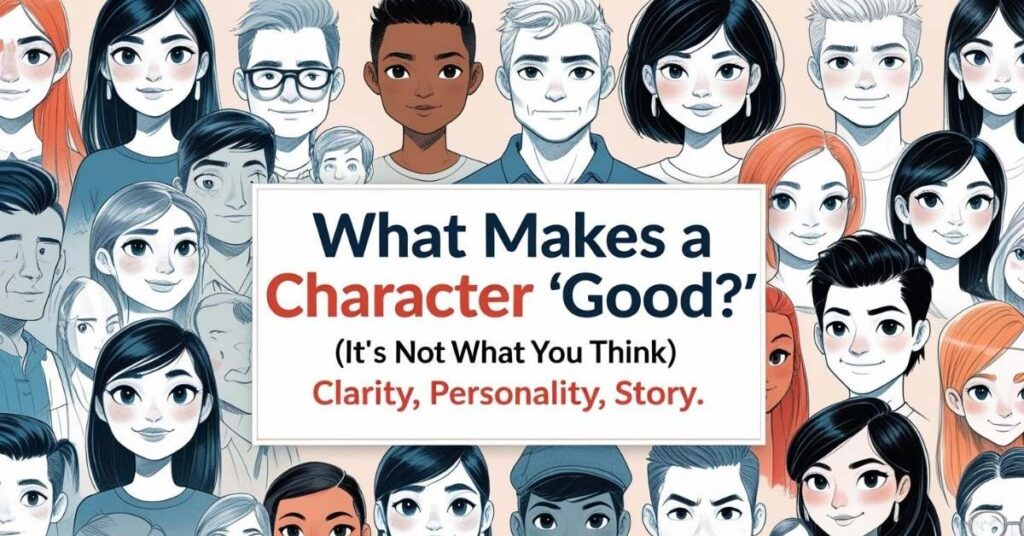It’s Not About How Well You Draw
Let’s get this out of the way: a “good” character design isn’t just about clean lines, fancy shading, or realistic proportions.
Some of the most iconic characters in animation history—think Snoopy, SpongeBob, or Stitch—are made of simple shapes and bold ideas. Their power comes not from detail but from clarity, personality, and story. That’s what makes them memorable—and surprisingly easy to draw over and over again.
What Actually Makes a Design ‘Good’?
Think of character design as visual storytelling. It’s not about perfect anatomy—it’s about expressing who that character is before they even move or speak. When a design captures a character’s personality, role, and energy at a glance, that’s when it really works.
Here are five things that matter more than being a technically “good” artist:
- Silhouette: A strong character design should be recognizable by shape alone. Clean, clear outlines make characters readable even in shadow.
- Personality: Posture, gesture, expression, clothing—all of these should give you clues about who the character is.
- Function: A good design supports how the character moves or acts. A stretchy, exaggerated comedy character will look very different from a quiet, dramatic one.
- Consistency: Can the design be drawn again and again without falling apart? Repetition matters, especially in animation.
- Appeal: This doesn’t mean the character has to be cute. It means the design feels balanced, clear, and fits the tone of the story.
Each of these elements helps turn a character into someone viewers can understand at a glance—and remember long after the story ends.
Start with Who They Are, Not What They Look Like
A helpful trick? Begin with personality. Ask yourself:
- What does this character want?
- What are they afraid of?
- What makes them unique in their world?
Then, shape your design around those answers. A shy character might have hunched shoulders and sleeves that hide their hands. A bold adventurer might take up space with a wide stance or exaggerated angles. When form follows personality, your characters feel more alive.

You Don’t Need to Be a Great Artist to Be a Great Designer
Design and drawing are different skills. You can be a fantastic designer—even if your drawings are simple.
Professional character designers often sketch fast and messy to test shape, pose, and expression before ever “cleaning up” a final line. Their first goal is clarity—not polish. That’s where beginners can shine, too. Focus on storytelling, not perfection.
The more you think in terms of shape, story, and attitude, the stronger your designs will become—even if they’re drawn with stick figures.
Try This: The Reverse Design Challenge
Here’s a fun beginner exercise:
Pick a character you like from a movie or show—but don’t look at them. First, write down three personality traits. Then, from memory, sketch what you think that character would look like based on those traits alone.
Only afterward, compare your version to the original. You’ll start to understand how personality influences shape and design choices—and where your instincts are already working well.

Final Thought
A good character design doesn’t have to be complicated or perfectly drawn. What matters most is whether the character tells a story—before they ever say a word. Start small, think clearly, and trust that personality can be more powerful than polish.


























